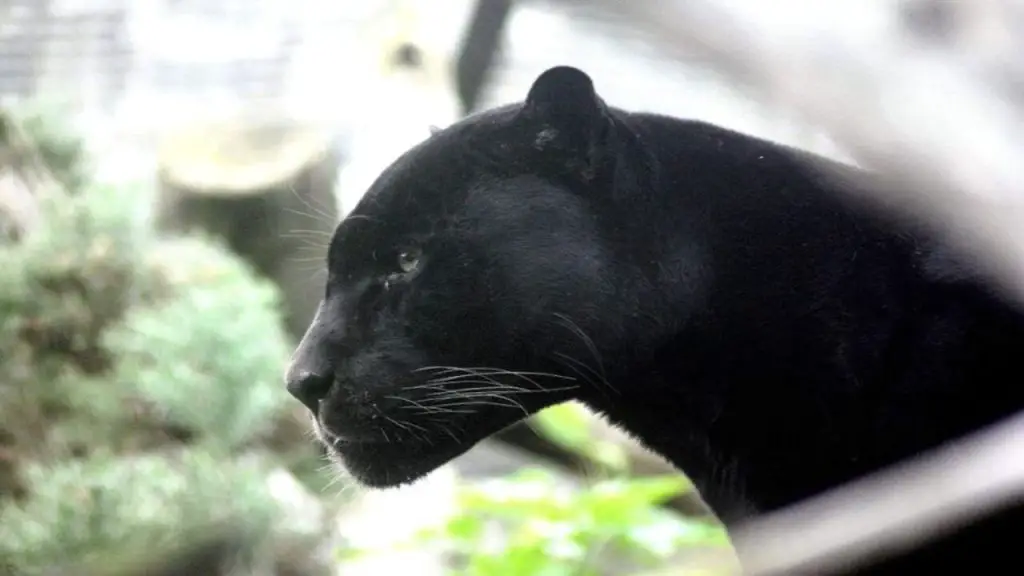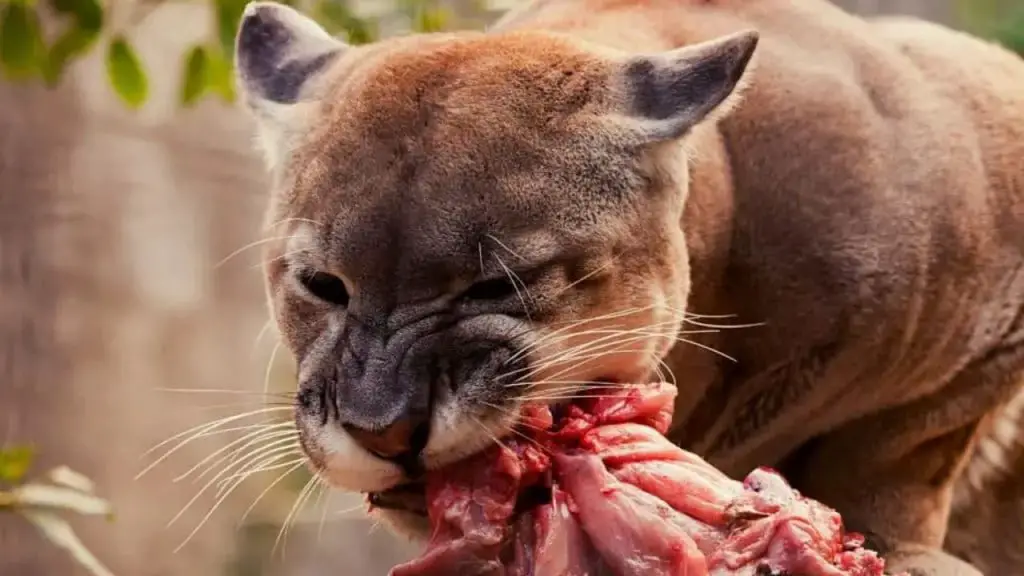As an Amazon Associate I earn from qualifying purchases.
Panthers, those majestic and mysterious big cats, have captivated the interest of wildlife enthusiasts and researchers for a long time.
Their sleek black coats and powerful presence in diverse ecosystems make them truly fascinating.
A common question people often ask about panthers is, “What do the panthers eat?”
In this blog post, we’ll dive into the eating habits of these remarkable creatures, exploring their various species, natural habitat, hunting behavior, life cycle, potential predators, and the intriguing list of foods that sustain panther cubs.
We’ll also discuss their conservation status and taxonomy, concluding with some interesting facts and features that add to the allure of these big cats. So let’s get started.
Different Species of Panthers

1. African Leopard
The African leopard is a master of adaptability, thriving across the diverse landscapes of sub-Saharan Africa, from the open savannas and grasslands to the lush depths of dense forests.
Easily recognizable by its striking golden-yellow coat adorned with unique black rosettes and spots, the African leopard possesses a natural elegance.
Agile climbers and powerful hunters, these leopards are renowned for their stealth and cunning.
Preferring a solitary lifestyle, they often rely on ambush tactics to secure their prey.
2. Jaguar of the Americas
Jaguars in the Americas are amazing creatures that live in different places like rainforests, swamps, and grasslands, from the southern United States to the Amazon Basin.
These big cats are strong and muscular, and what makes them stand out is their coat covered in large, distinct patterns.
What’s cool about jaguars is their powerful jaws, which help them crush the skulls or shells of their prey.
Jaguars are not just good on land; they’re excellent swimmers too, showing off their skills in the water.
Their ability to live in lots of different environments is truly impressive and shows how adaptable they are in the wild.
3. Elusive Black Panther
The term “Black Panther” doesn’t mean it’s a different kind of big cat; it’s just a name for any large cat with a dark coat.
This includes leopards and jaguars that have a lot of dark color, making them look black.
These sneaky black panthers live in different places, like thick forests and open grasslands. Their dark color helps them hide, especially in some places.
Scientists believe that being all black is useful for hiding in the dark. This special skill might help them catch food better, making them interesting in the wild.
Now that we know about the different types of panthers, let’s explore where they live.
Natural Habitat
Panthers demonstrate a remarkable ability to thrive in a variety of environments, moving beyond specific geographical boundaries.
Whether in the lush rainforests of Southeast Asia or the dry landscapes of Africa, these felines effortlessly adapt and establish themselves in different ecosystems.
Their impressive ecological flexibility is evident in their capacity to carve out niches in diverse environments, showcasing resilience and adaptability.
This adaptability not only underscores their ability to survive but also emphasizes the intricate role panthers play in maintaining the ecological balance of the habitats they inhabit.
Hunting Behavior of Panthers
Dominating the realm of top predators, these creatures exhibit remarkable hunting prowess shaped by keen senses and robust bodies.
Their tactics cover a range, from sneaky ambushes to speedy chases, proving their knack for adapting to different environments.
Jaguars, with their mighty bite force, excel at crushing skulls, while leopards use their agility to climb trees and surprise prey from above.
These big cats are famous for their stealth and skill, using a mix of sharp senses, agility, and strength.
They quietly move through the underbrush, patiently waiting before swiftly going after their prey with precise moves.
With this skill set, panthers become formidable hunters, playing a vital role as top predators in their ecosystems.
Life Cycle
The life cycle of a panther is a journey through distinct stages, starting from birth and progressing to adulthood.
Panther cubs enter the world blind and vulnerable, relying entirely on their mother for nourishment and protection.
As they mature, they undergo a crucial developmental phase, acquiring the essential skills needed to navigate and survive in their demanding environments.
Typically, panthers give birth to litters comprising 2-4 cubs, and the mother diligently cares for them until they reach a stage where they can independently face the challenges of the wild.
This life cycle is marked by various hurdles, from the delicate infancy stage to the intricate navigation of the inherent dangers within their natural habitat.
Are there any Predators or Panthers?
Panthers are top predators in their ecosystems, but they face several challenges.
Human activities like moving into their territory, loss of their natural homes, and occasional encounters with other big predators can threaten their survival.
Despite their strength, panthers are at risk from both wildlife and human actions.
The delicate balance that lets panthers do well is disturbed by problems such as losing their homes, illegal hunting, and conflicts with humans. That’s why it’s crucial to work on conservation efforts.
These efforts are necessary to deal with these challenges and make sure panther populations are preserved, protecting the important role they play in keeping their habitats in ecological balance.
Now that we’ve talked about the animals that might harm panthers, let’s now look at What Do Panthers Eat Throughout The Year?
What Do Panthers Eat Throughout The Year?

These animals are opportunistic carnivores, and adjust their diet throughout the year based on the seasonal availability of prey.
1. Spring
During spring, panthers often go after young ungulates such as deer, exploiting the abundance of newborns like fawns, calves, and piglets, which are easy prey.
Additionally, panthers may shift their focus to smaller animals like rodents, birds, and reptiles, as larger herbivores haven’t fully recovered from the winter season.
2. Summer
As summer advances and a variety of prey becomes available, panthers may incorporate smaller mammals into their diet.
The season brings an abundance of food sources such as deer, wild hogs, monkeys, and sloths.
Panthers prioritize these larger animals to store up fat reserves for the upcoming colder months.
3. Autumn
In the autumn, as certain prey species migrate and temperatures begin to decrease, panthers become increasingly flexible in their dietary choices.
Their focus may shift to different species, and they might start targeting smaller mammals, fish, carrion, and even fruits to supplement their nutritional intake.
4. Winter
In winter, when some food is hard to find, panthers change their habits. They start eating smaller animals like mammals, and sometimes even reptiles and birds.
Winter is the toughest time for panther hunting. There’s not as much food around, and the days are shorter.
So, the Panthers focus on saving energy. They might eat leftovers, hunt smaller animals when they get a chance, or go without food for longer.
This seasonal flexibility in their dietary choices reflects the panthers’ ability to navigate and thrive in various environments throughout the changing seasons.
List of Food Baby Panthers Consume
Baby panther cubs rely a lot on their mom’s milk at first, which is packed with important stuff to help them grow and stay healthy.
When they’re about three months old, they get curious about eating meat, making a cool shift from depending on milk to being independent carnivores.
Even though they’re trying out meat, they still drink their mom’s milk regularly because it gives them essential stuff like protein, fat, and things that keep them healthy.
This mix of milk and meat helps them get everything they need to grow strong. At first, they learn about meat by nibbling on scraps from their mom’s hunting.
As they get older, their mom encourages them to practice hunting with small or injured prey.
This fun training makes them confident and ready to catch their food, which is super important for their digestion, hunting skills, and getting used to different tastes in their meals.
This variety ensures they get all the nutrients to become strong and skillful predators.
Conservation Status & Taxonomy
They, belonging to different species, are dealing with conservation issues as many of them are now considered vulnerable or endangered due to various threats.
Understanding their classification and ecological importance is crucial for creating effective plans to protect them.
We must work together to safeguard these incredible animals and the environments they call home.
Conservation efforts focus on preserving their habitats, reducing conflicts between humans and wildlife, and spreading awareness about the importance of these remarkable creatures.
Interesting Facts and Features of Panthers
Panthers come with some extraordinary traits, like amazing night vision that helps them hunt well in low light.
While they usually prefer a solitary lifestyle, mothers raising their cubs bring a touch of family to the scene.
These big cats aren’t just predators; they captivate researchers and wildlife fans with their special rosette patterns and the way they can adapt to different environments.
Exploring the secrets of their behavior and body adds an extra layer of fascination to these amazing creatures, highlighting that panthers are more than just skilled hunters; they’re complex and intriguing in many ways.
Conclusion
In summary, panthers represent a fascinating combination of ecological importance and innate marvel.
Delving into their diet, behavior, and distinctive traits provides insights into the intricate equilibrium crucial for their existence.
As caretakers of our planet, it becomes our duty to value, safeguard, and uphold the awe-inspiring legacy of the panther. Thank you for taking the time to read!
FAQ’s:
Yes, panther cubs drink their mother’s milk when they are young.
However, as they grow, they also start eating meat.
As for black panthers sleeping during the day, like many big cats, they are crepuscular, which means they are most active during dawn and dusk.
While they may rest or nap during the day, they don’t sleep the entire time, as they need to be alert for hunting and other activities.
Amazon and the Amazon logo are trademarks of Amazon.com, Inc, or its affiliates.

